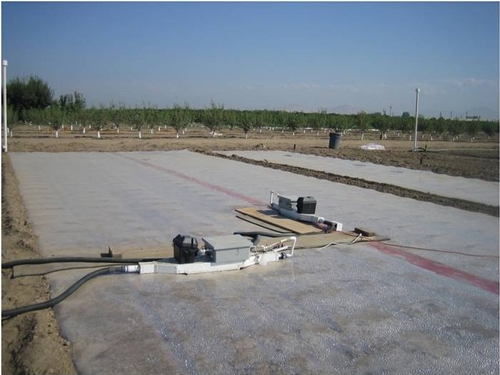Jan 24, 2011
During the last few years, one of my core research areas has included several projects related to preplant soil fumigation in collaboration with a number of UC, USDA-ARS, and industry researchers. I touched on soil fumigants a bit a few weeks ago shortly after methyl iodide was registered by DPR (link to previos post). Today I thought I’d touch upon research results related to minimizing emissions of two of the most widely used methyl bromide alternatives, 1,3-dichloropropene and chloropicrin.

Soil fumigation is used prior to planting a number of high value crops in California. One of the most widely used soil fumigants, methyl bromide, is being phased out because of its classification as a stratospheric ozone depletor.
[Recall that ozone in the stratosphere serves to block some of the harmful UV radiation from the sun. Many other ozone depletors such as the chlorofluorocarbons, hydro chlorofluorocarbons, and a number of related propellants, refrigerants, etc have been phased out. More information on these compounds and the international agreement known as the Montreal Protocol can be found at http://ozone.unep.org/Publications/MP_Handbook/ ]
Currently, methyl bromide is only used in the US under annually reviewed Critical Use Exemptions (CUE) by a few commodities with an important need but with no technically and economically feasible alternative fumigants.
Fumigants, by nature and design, are chemicals that move in the gas phase and affect a broad range of organisms. The currently available alternatives (1,3-dichloropropene, chloropicrin, methyl iodide, MITC generators) do not deplete ozone but have their own baggage - mostly related to environmental quality (air pollution) and human safety (chronic and acute exposure). Therefore, any application techniques that can reduce the amount of fumigant gas that leaves the target area (soil) will increase pest control efficacy and reduce the chances for unintended exposure.
Our recent research efforts have focused on 1) testing alternative fumigants to methyl bromide and maximizing efficacy with application technology, 2) developing non-fumigant strategies to minimize the effects of soil borne pests on important agricultural commodities, and 3) minimizing emissions of fumigants to the atmosphere after application. This last objective is the subject of the attached California Agriculture (Cal. Agric. 65:41-46) review article.
In this paper, we discuss the current status of emissions reduction tactics and compare the effects of water management (preirrigation, water seals), plastic film (conventional plastics, low permeability or VIF films), and fumigant degrading soil amendments.
Attached Files: